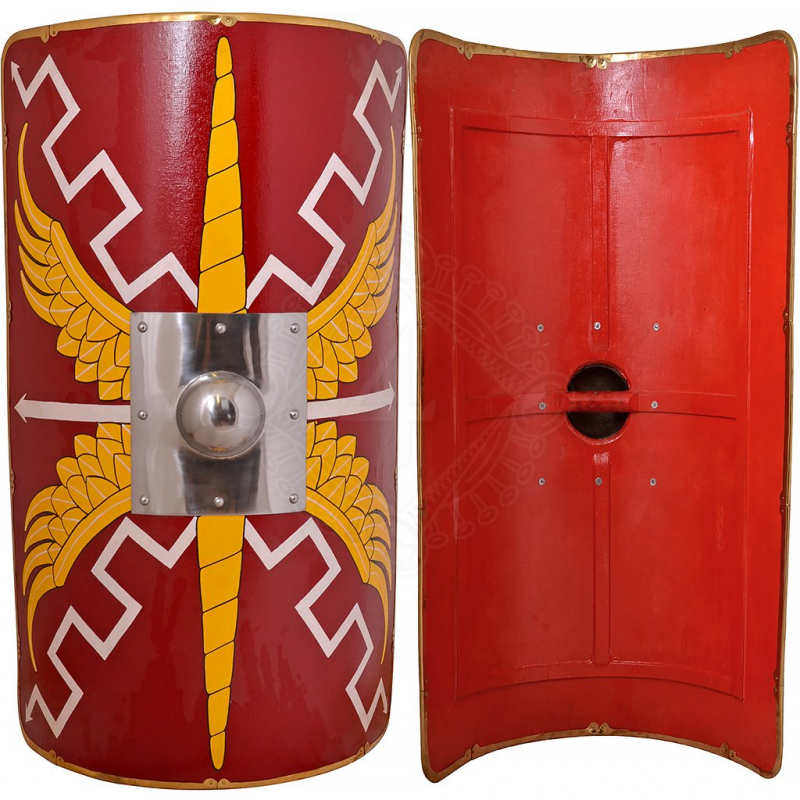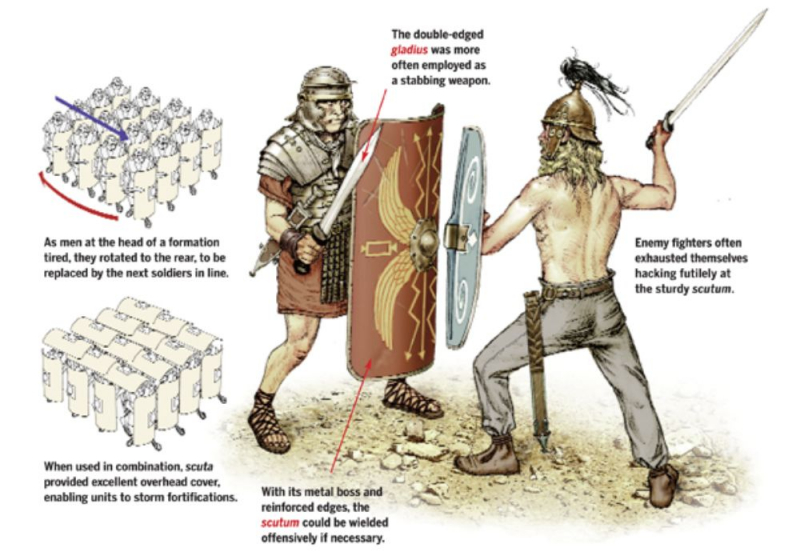Legionaire scutum
The most famous shield used by the Ancient Roman Army in practically all conflicts was the Legionnaire Scutum. This shield was initially used by the Italic Antiquity before being adapted by the Roman army in the fourth century. The shield's shape was different from the shapes used in later times. The shield was originally round and flat, but after the conquest of Britain in 43 AD, it evolved into a rectangular and curved design.
Initially, the shield was built of a single layer of wood, making it easy for the enemy to poke through it and harm the Roman army. In the course of the Roman campaign against Dacia and Carthage, a sizable portion of the Roman Army suffered injuries. Since then, two to three layers of wood have been added to create the shields. To give the flat wood a curve shape and shield the army from all sides, more strips of wood were joined with adhesive from the sides.
The leather and a piece of linen fabric with a beautiful design on the front would be placed over the layers of wood. The metal lightning bolt or the wings of an eagle were the most prevalent prints on these shields. The lightning bolt would stand in for one of the old Roman gods, Jupiter, the King of God, while the eagle's wings would represent the Roman army.
Scutum was designed specifically to defend foot soldiers from all sides. The Testudo Formation, one of the Roman battle tactics, was where the troops employed this shield the most. They would carry the shield and position themselves on the top and front. The shield was powerful and could defend the soldiers from all sides, but it was heavy and difficult to maneuver with the hands. Its measurements were 105.5 cm in height, 41 cm broad, and 30 cm deep, and it weighed between 5.8 kg and 6.8 kg.
The senate honored Emperor Augustus, one of the greatest Roman emperors, with the golden scutum in 27 BC for his crucial role in putting an end to the civil wars and rebuilding the republic. However, just one intact piece of Roman scutum was discovered at Dura Europos, one of the Roman forts in Syria.





